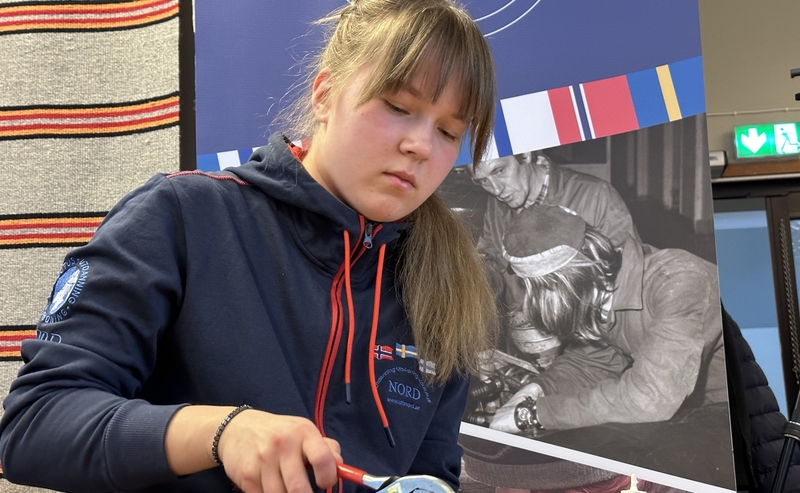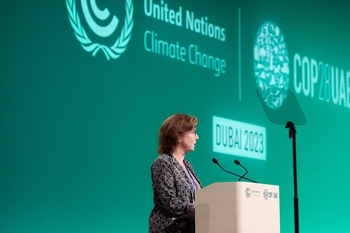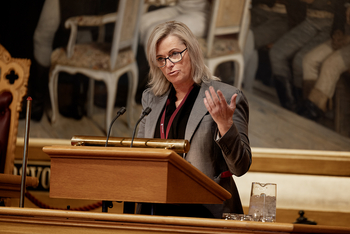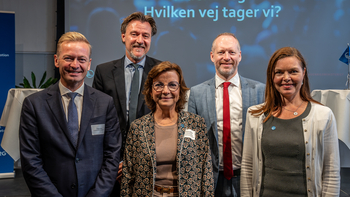Measures required to strengthen vocational training in the Nordic Region

Minna Kummala studerar till skomakare på Utbildning Nord i Övertorneå.
Minna Kummala is studying to become a shoemaker at Utbildning Nord in Övertorneå.
According to forecasts, the Nordic Region will lack up to 350,000 vocationally trained workers by 2030. The Nordic Council’s report “Attractive Vocational Training in the Nordic Region”, published in January this year, lists a number of measures focusing on the dissemination of information between the countries, the removal of obstacles to freedom of movement, and the gathering of information on specific labour needs throughout the Nordic Region. The content of the report has been drawn up by a think tank with members from the education sector, trade unions, and employers’ associations in the Nordic Region, many of whom also attended the conference.
During the day sessions in Haparanda, the debate also took place on a much more general level. A cultural change in respect of the view of the status of vocational training, continued efforts to counter stereotypes within female and male-dominated vocational areas, and the question of funding for vocational training were also discussed.
More funding for higher vocational training?
One of the participants at the conference, Tormod Skjerve, who previously represented the Norwegian employers’ organisation Virke, believes that a discussion about the financing of higher vocational education in the Nordic Region is in order.
“In Norway, academic education at college and university receives 97% of the funding available, while higher vocational education receives just 3%. This is a significant difference and I’m calling for a debate on whether that relationship should be re-prioritised with the needs of the labour market in mind,” says Skjerve.
Skjerve also points out that, at the moment, we’re in a situation where the demand for higher education means that it’s increasingly the students themselves who have to bear the costs, while within the academic world the governing principle is that education must be free.
Trøndelag model activates unemployed young people
One of the participants at the conference was Torbjørn Aas, director of the NAV in Trøndelag, an authority that acts as a job centre, national insurance fund, and social service provider. He’s been involved in developing the so-called Trøndelag model, which helps young people who have ended up outside of the labour market and the school system to get vocational training. This is a way to simultaneously address the need for skilled labour within the region.
“What we have is a fruitful co-operation between NAV, the Trøndelag county administration and local companies and educational institutions – everyone benefits from it. The young people get training and jobs, and the companies get the staff they need,” explains Aas.
Gender balance within education is important
Hildur Ingvarsdóttir, a technical college principal, talks about efforts relating to gender equality within vocational training in Iceland.
“It’s become clear that workplaces where both women and men work together are more attractive than those which are heavily dominated by one or the other. To fix this, you have to focus on recruiting both women and men into all training courses. We’re working with this at my school on an ongoing basis and we’ve succeeded in increasing the number of women who, for example, study as electricians and plumbers,” she says.
I’ve come to realise that we must work a lot more with vocational training within Nordic co-operation and put this issue higher up the political agenda.
Priority issue for the Nordic Council
Chair of the Nordic Council Committee for Knowledge and Culture, Camilla Gunell, believes that the conference has been an eye-opener.
“I’ve come to realise that we must work a lot more with vocational training within Nordic co-operation and put this issue higher up the political agenda,” says Gunell.
She points out that it should be made more attractive for children and young people to choose a vocational pathway as early as primary school, and that certain sectors in several regions in the Nordic Region are experiencing unemployment, while others are crying out for labour, which could be solved by way of closer co-operation, such as between the trade unions and job centres in the respective countries.
The President of the Nordic Council, Jorodd Asphjell, links the question of the future of vocational training to Nordic co-operation’s vision of the Nordic Region as the most integrated and sustainable region in the world.
“In order to be the most integrated region in the world, we need to be able to study and work across the entire Nordic Region. And as far as the green transition is concerned, battery manufacturing is a good example of a growing industry where we in the Nordic Region must work together to ensure that education can offer the skills required in the future. That’s why it’s so important to have gatherings like this one where representatives of different industries can exchange experiences from their respective countries,” says Asphjell.
Just like the president of the Nordic Youth Council, Rasmus Emborg, who is also taking part in the conference, Asphjell also points out that young people themselves should also be included in efforts to develop vocational training.




